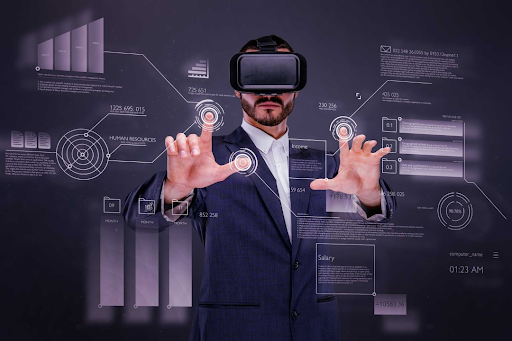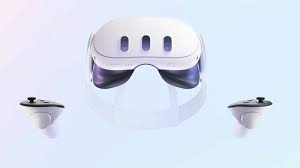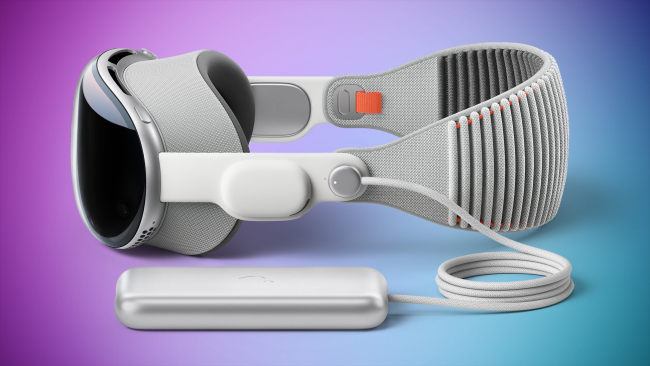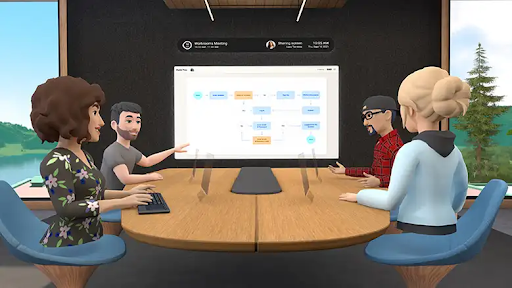
The first appearance of modern technologies in the 1970s, such as TVs and game consoles, were revolutionary to entertainment and how people spent their leisure time. iPhones were also developed, and with them–apps that can be utilized for games, reading, or watching movies on the go. The next advancement for developers was to create an immersive experience for users to feel as if they were physically somewhere else, while in the comfort of their homes. Introducing virtual reality, where users are able to immerse themselves in a new environment, or even attend their jobs through these headsets. It is life-changing, and the possibilities of how virtual reality can be used for work are endless; yet virtual reality threatens proper social inter. Succumbing to complete use of virtual reality for work would take away from genuine social interaction, prevent interpersonal relationships, which can affect the human need for socializing.

The development of virtual reality, like its technology predecessors, has opened a new window of opportunity for people to improve workplace efficiency while giving workers the ability to improve their skills through training simulations. As someone who has “set foot” in the virtual world, it is undeniably incredible and it is easy to theorize that in a decade or so, the virtual world will be hard to differentiate from the real world. Current virtual reality is not at that stage yet, so simple things lack accommodations. For example, it is unpleasant for someone who wears glasses, like myself, to wear the headset on. Without my glasses, I still am unable to see clearly, and could feel myself becoming dizzy and losing balance multiple times. Besides the confining nature, it was very easy to lose track of time in games and simulations. This is terrifying because the more people spend time online in virtual reality, the less proper social interactions they receive. Virtual reality cannot supply you with crucial senses needed to analyze our situations. People now have the ability to hide behind avatars or use the press of a button to remove themselves from situations. It may seem beneficial, but you only isolate yourself by doing that. Social interaction would decrease, and that segues into a new era of isolation, leading to a decline of mental health.

The first device pertaining to virtual reality was in 1968, invented by Ivan Sutherland and Bob Sproll. It took until 1987, when the term “virtual reality” was coined by Jaron Lanier, who was a researcher that contributed to the virtual reality industry. Virtual reality itself is a computer generated 3D environment that allows individuals to interact with this environment, giving the illusion of reality (Encyclopædia Britannica). Its invention significantly impacted society, as now playing games, watching videos, or even just exploring the world, was never made easier. It redefines “escaping from reality,” and grants individuals accessibility and enhanced engagement and flexibility. Currently, virtual reality is being developed further by major companies such as Meta with the oculus quest 3 (Figure 1), and Apple with their vision pro (Figure 2), who are competing to create worlds where humans can experience life in ways they cannot in the physical world.
The toll of social isolation is immense, causing outcomes like depression, anxiety, and cognitive decline to name a few (The Impact of Social Isolation on Mental Health). These symptoms were evident during the SARS-CoV-2 pandemic, when people were locked inside their homes. One could argue that though virtual reality users would be at home, the experience would still be able to provide better interaction than computer screens would. This argument is weak, most normal jobs have people individually working in front of a computer for hours, and this would only be translated to the virtual world. During lunch or break times, instead of being able to have face-to-face interactions, a person can only log off and return to the real world, where they are alone. Coworkers would no longer have interpersonal relations, and virtual collaboration would weaken team cohesion immensely. Use of virtual reality over a great period of time would isolate a person from reality, negatively affecting personality traits such as extraversion and openness that are crucial to handle real world situations. Meta executives that say, “the metaverse will have a positive impact on their organization,” (One Week Working in the Metaverse Led to 19% More Anxiety and 16% Less Productivity, New Study Finds)(Figure 3) are ignorant in their failure to recognize the obvious psychological toll virtual reality will cause in the workspace.

Going against the status quo, virtual reality can create a safe space, and allow individuals gain extroversion that they may not have in real life. They can practice social interactions and feel more confident in future conversations. In reality, interpersonal relationship skills are impossible to develop with simple technology. It simply will never account for the variety of human emotions that exist and cannot possibly prepare a person for every social interaction they may encounter. So, how effective is virtual reality as a substitute for social interaction? The answer is zero, it is not. It has the opposite effect of helpfulness and results in a decline of mental well-being. As assessed in One week working in the metaverse led to 19% more anxiety and 16% less productivity, new study finds by Tristan Bove, during a study where university staff were to spend their “35-hour workweek” in virtual reality, these participants reported, their “anxiety over their job increasing by 19%,” because their “perception of workload” had increased significantly. The span of the week displayed a serious increase of anxiety in the workspace, which is dangerous since the mental health of workers will reflect on work ethic and enjoyment. Social relationships with coworkers typically combat struggles in a workspace, but virtual reality would remove this element since most people when on breaks or downtime would most likely remove their headsets, and not socially interact with others. Social relationships are important for not only coherent communication, but also managing work-related stressors and connecting to be able to work as a team. There is no team, if there is no relationship powering it, which is why virtual reality poses a real threat against social interactions crucial to humans.
To rely on virtual reality is to rely on technology that cannot recreate reality; and to remove the ability to experience human interactions. Virtual reality as it is actively hinders social interaction, no matter how realistic it can be, at the end of the day the user is aware that everything they are experiencing is not part of reality. It will not erase a person’s need for face to face interactions with other humans, it can only create a temporary distraction from the confinement of a person’s room. Should virtual reality become a system used to replace workplaces, it should be no surprise when it starts to one by one take over establishments; isolating people one by one, and jumpstarting a new era of mental health issues because of its detachment from reality.


